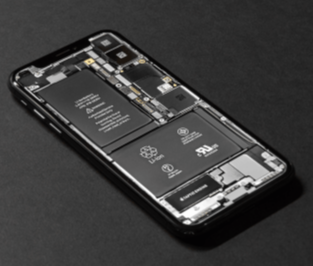Over time cell phones have been primarily powered by different kinds of rechargeable batteries NiMH or nickel metal hydride batteries, NiCad or nickel cadmium batteries, more recently lithium ion batteries and most recently LiPos or lithium polymer batteries. NiMH, NiCAD, lithium ion and lithium polymer batteries are all rechargable, meaning that after they are depleted they can can be recharged and will again store power. The efficacy of which they recharge and store power has determined their longevity in consumer electronics.
The age of the cell phone dictates the type of cell phone battery it likely used. Very old cell phones often used NiCad batteries or NiMH batteries while newer smart phones all use lithium ion batteries.
NiCad batteries charge better only if they are fully discharged first. Due to the nature of cell phone use it is not really conducive to reliable use if you can only charge it when it is first completely discharged. Additionally NiCad batteries contain cadmium, which is a toxic heavy metal, which makes disposal more complicated. NiCad batteries are also larger and heavier than it's counterparts.
NiMH batteries have a two to three times the capacity of a NiCad battery of the same size additionally the NiMH batteries charged faster than it's predeccor NiCad batteries. However, like NiCad batteries NiMH batteries charge much better if it is fully discharged first.
Almost all of today's smart phones rely on lithium ion batteries which are considered more reliable. Todays lithium ion batteries, are smaller, lighter and hold it's charge longer. Sony produced the first commercial lithium batteries in the 1990s, they were based on research from Oxford University that was done in the 1970s. The Oxford researches published their findings in 1980, Sony used the research to develop commercial technology. Modern day cell phones, portable electronics and laptops all use lithium ion batteries. In fact lithium ion batteries have appreciated wide spread use since 1991 and are even now found in some hybrid and electric cars.
Lithium polymer batteries are similar to lithium ion batteries, their predecessor, the difference is that lithium polymer batteries use a polymer electrolyte instead of a liquid electrolyte. LiPo batteries are likely to become more common place and gain popularity in consumer electronics, because they have more energy density and are lighter than other batteries. The downside at this time to lithium polymer batteries is increased expense and increased possibility of flammability.
Like all rechargeable batteries, cell phone batteries contain chemicals. Overtime the battery casings can crack causing the chemicals contained inside the battery, to leak out. If the batteries are placed in landfills the chemicals can cause environmental damage. It is important to properly dispose of batteries and protect the environment. In fact many US states legally require residents to recycle rechargeable batteries, in come cases even requiring electronics manufacturers and vendors to facilitate recycling services. It is best to dispose of old batteries as soon as you are able.
Call2Recycle has become the go to location for disposing of cell phone batteries. Founded in 1996 the Rechargeable Battery Recycling Corporation (RBRC) is a nonprofit organization dedicated to recycling rechargeable batteries. They launched Call2Recycle, the largest battery recycling program in North America with 30,000 drop off locations throughout North America.
Call2Recycle accepts NiCad, NiMH and lithium ion batteries. Batteries collected through the Call2Recycle are processed to reclaim any usable materials like nickel, cadmium, or iron. The reclaimed materials can then be used in new products.
call2recycle.org
Article Date: April 25, 2020
